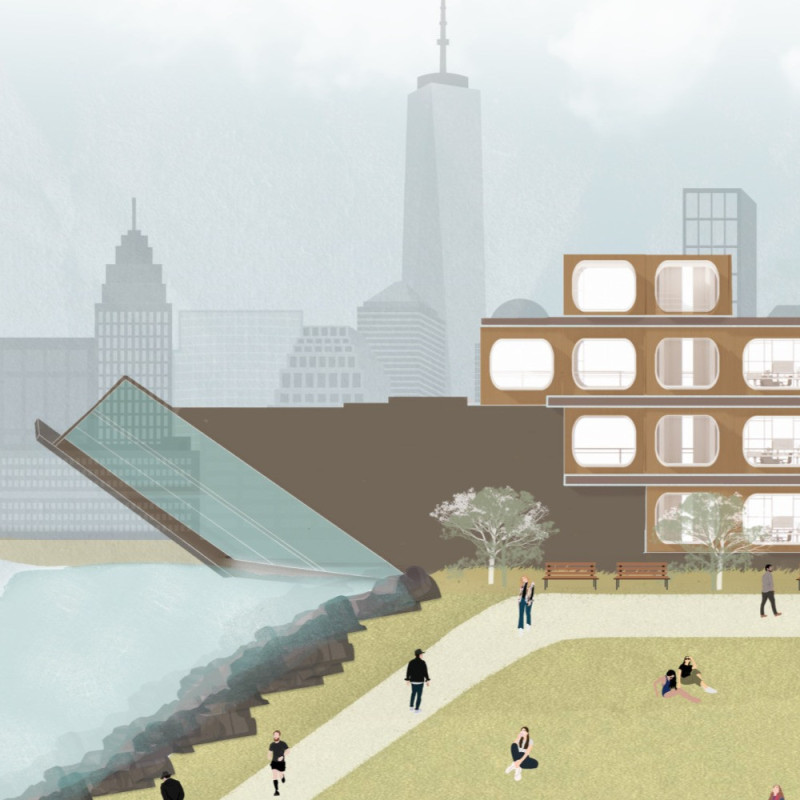5 key facts about this project
At the heart of the project lies a commitment to sustainability, with an emphasis on environmentally sensitive approaches and materials. The building's design integrates natural elements that are pivotal in creating a harmonious indoor-outdoor relationship. Large, strategically placed windows allow for abundant natural light, minimizing the need for artificial illumination throughout the day. This design decision not only enhances the occupants' well-being but also reduces the overall energy consumption of the structure.
The architectural materials chosen for the project further emphasize its sustainable ethos. A careful selection includes reclaimed wood, locally sourced stone, and high-performance glass, all of which contribute to the building's durability and minimal environmental impact. The interior spaces reflect a clean, modern aesthetic, where the textures and colors of the materials resonate with the overall design philosophy. The warmth of the wood complements the cool, sleek surfaces of glass and stone, creating a balanced and inviting atmosphere.
Attention to detail is evident in the project’s design elements, which incorporate both functionality and aesthetic value. The layout is organized around a series of interconnected spaces that encourage a sense of community and collaboration. Common areas are designed to foster interaction, while private spaces are cocooned in a way that offers tranquility. This duality of open and intimate spaces is essential for the building's function, as it accommodates diverse activities, whether social gatherings, work, or quiet reflection.
Unique design approaches are apparent throughout the project, particularly in its structural expression. The use of cantilevered elements not only provides visual interest but also maximizes usable space without hindering the surrounding landscape. The building's roof features green spaces that not only insulate the structure but also contribute to biodiversity and urban greenery, making it a vital part of the local ecosystem.
The architectural designs reflect a comprehensive understanding of the site context, drawing inspiration from its historical and cultural significance. The project aligns with local architectural vernacular while pushing the boundaries of traditional form and function. This delicate balance enhances the project's relevance, making it a significant addition to the area.
As visitors explore the project, they will find a wealth of layers to engage with, from the architectural plans that outline the thoughtful layout to the architectural sections that reveal the spatial dynamics. Each element has been meticulously crafted to ensure the project meets the intended design outcomes while inviting users to immerse themselves in its environment.
This project stands as a testament to innovative architectural ideas, providing a blueprint for future developments that prioritize sustainability and community engagement. For those interested in learning more about the architectural elements and the comprehensive design process, the detailed project presentation reveals a wealth of insights. Explore the unique components of the architectural designs, delve into the functional aspects captured in the architectural plans, and appreciate the intentionality behind the architectural sections. The exploration of this project promises a deeper understanding of contemporary architecture and its potential to influence the built environment positively.


 Taseen Rahman,
Taseen Rahman, 























